2019-07-24
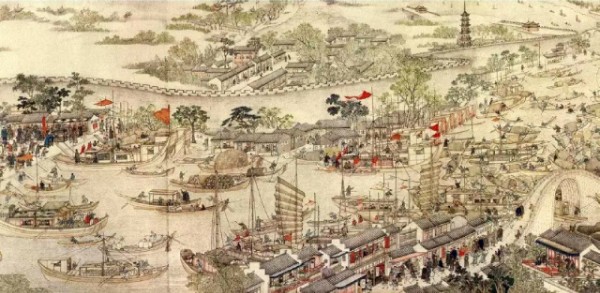
Prosperous Suzhou by the Qing Painter Yang Xu (清代画家徐扬·《姑苏繁华图》) 【Aiden in English】
Up above, there is heaven; down below, there are Suzhou and Hangzhou. I asked my mom what the difference was between the four attractions that we saw in Suzhou today and yesterday. She said that some were… bigger. Amazing. Imagine the most generic Asian temple in the most generic Asian setting. You have a general outline of the events that have occurred over the last two days. Suzhou is a great city -- or, rather, an average one. In my mind, as an outsider, every city in China is full of culture, people, history, and old wooden buildings that somehow hold more architectural value than new ones. For a city to be out of the norm in China, it would probably have to first not be overpopulated and second, not have a historical attraction; however, for a city to be above average, it would have to not host swarms of annoying tiny mosquitoes and be below 95oF/35oC during the summer. Thus, average cities like Suzhou attract millions of visitors from other places in China. It's odd seeing only Asian tourists, but due to the big names of Beijing, Shanghai, and Hong Kong, not "many Americans" go. "Hey, why don't we visit Suzhou this summer?" Suzhou is a fabulous city. There is a surprising amount of history, but I don't care much for it after a year of AP US History (someone explained why I chose AP World History next year). In the backyard of the Pan Pacific Hotel, where we stayed, the Pan Gate Scenic Area, filled with many historical landmarks, beckoned tourists. When I first read it, I thought, "Wow, that is a massive backyard." Luckily, they shared it with people like Mom and me, so we could join. A few notable aspects of Chinese historical architecture are as follows: first, if the building in question is a tower, it must not only be an odd number of floors tall but also have an even number of faces. The tour guide described the relationship as a yin-yang. Didn't understand why they didn't have even-numbered floors and odd-numbered sides. Perhaps it was too challenging to create heptagon floors, and the architects gave up. Towers could also not be above nine floors, as an emperor took the number n" ne and decl "red it "unavailable" to everyone else, allowing only those with special permission to use the number. It's a miracle the Chinese ever got good at math ─ they were missing an entire digit. Of course, it wasn't that bad. Ordinary folk could use nines daily, but you could get in big trouble with significant objects of size or value. Nine doors? Watch out. Nine windows? Be careful. Nine children? Depends on gender. Speaking of gender, historically, religion favored men, particularly in deities and figures. However, if you asked me about certain Buddhists, I would've assumed them to be women (Bodhisattva, for those who understand where I'm coming from). Little did I know that sexism existed before the 1960s and dominated Asian culture. Those Bodhisattvas were once male, but Chinese folk with political correctness viewed the gender disparity and decided, "Hey, since genders can be changed nowadays, why not switch a few and make 'ods into goddesses?" Well, I would say it worked, even though the images given to those goddesses were still stereotypical. Among the massive gardens are these big Taihu rocks. In the US, we "call them 'boulders" -- big, smooth, and bulky, just like Americans. In China, large rocks typically have holes and craggily shapes, as if someone had taken a hole-puncher and gone wild on a poor piece of limestone. These large sponge-like rocks create many interesting phenomena: deadly cornfield mazes that cut and scrape your elbows, creepy-looking depictions of faces, and some shade that doesn't block sunlight. Regarding the second aspect, the guide pointed to a taller rock and stated it resembled a hunched woman. I did not see a hunched woman. I saw a shark. I'm happy, so that's why I'm not an artist. Suzhou comes to a close in fire. Instead, I was the one on fire. In a blazing, 100% humidity, 100oF/37.8oC sunny day, I no longer wanted an 85oF/29.4oC Philadelphia that afternoon. Heck, that'll beat even the mornings here. Unfortunately, fat does not burn, to my disappointment. I need to burn off these soup dumplings I keep eating. 1) Administrator's Garden 2) Lion Grove Garden 3) Cold Hill Temple 4) Tiger Hill Pagoda 【红霞译】
上有天堂,下有苏杭。 我问妈妈昨天与今天在苏州看过的四大名胜*到底有啥区别,她说有着……明显差异,让我跌破眼镜,殊不知东方寺庙总体上大同小异。至此,恐怕你基本掌握过去两天到底发生了什么事情。 苏州是一座非常了不起──或者应说成不错的城市,在我这样的外来人眼里,中国每座城市无不集文化、人口、历史以及超越现代建筑价值的老木制结构于一体,若想在国内超群绝伦,首先表现出──没有人口过剩;其次──缺乏名胜古迹;另外,作为中等偏上的城市,它不得拥有大量丧心病狂的小蚊子,其夏季温度必须维持在95°F/35°C以下。 因此,全中国跟苏州势均力敌的城市吸引了数以百万计的外地观光客。奇怪的是,不像北京、上海、香港,到此游览的只有亚裔同胞,并没见到多少美国人来这里打卡。“嘿,那么今年暑假我们何必要跑来一趟呢?”其实苏州相当漂亮,它的历史底蕴又出奇地浓厚,只不过本人刚学完一年《美国历史》大学预修课(有人说这才是我下一学年选修《世界历史》大学预科的原因),对历史有点麻木。这次我们入居吴宫泛太平洋酒店,其后院紧挨着盘门景区,里面不少历史古迹都挺吊人胃口,难怪一走进景区我立刻心有感触,“哇塞,这个后院可真够气派”,住在酒店的客人允许免费参观,我和妈妈借机溜达一圈。 针对中国古建筑问题,有几个地方值得谈及一番。先以塔楼为例,不仅塔身一定得建成单数,而且塔面必须要修成双数,导游说这跟阴阳学有关,我纳闷何不把楼层变偶数并让楼面变奇数,也许造七边形楼面难度过大,建筑师懒得瞎折腾。塔高严禁超过九层,因为皇帝早已把九字化为己有,臣民们“不” 准擅自滥用这个数字,除非享有特权者,中国人精明擅长算数──对其它号码视而不见。 当然,说归说做归做。日常生活中老百姓可以用“九”,只是一旦牵扯上重要建筑的大小或规格,便会给自己带来麻烦,九樘门?当心。九扇窗?慎重。九个娃?取决于男女性别。说到性别,宗教历史上向来偏爱男性,特别表现在神像供奉方面。不过,如果你问起佛祖问题,我权当祂们是女性化身即菩萨(对于那些知道我来自何方的人来说)。我了解的不多,但性别歧视早在上个世纪六十年代之前便已出现,并且主导亚洲文化,菩萨曾一度全为男性,但中国人以政治正确眼光看待性别歧视并决定:“嘿,既然时下性别可以相互改变,为什么不把神灵变成菩萨呢?”得嘞,果然美梦成真,虽说菩萨模样千篇一律。 大型花园少不了大块太湖石,在美国,人们称之为“巨石”── 硕大、光滑、笨重,像美国佬似的。在中国,太湖石通常伴带有窟窿,而且皱漏瘦透,宛若有人手持打孔器疯狂地在可怜巴巴的石灰岩上凿洞,结果让这些海绵状石头产生很多有趣的现象:盘根错节的假山迷宫把你的胳膊肘划得伤痕累累,直观太湖石面不免叫人毛骨悚然,假山背阴处照样能感觉出阳光照射。鉴于第二个特点,导游指向比较高的假山,说它形如驼背的妇人,我横竖没看出来,反倒觉得像一条站立的鲨鱼,也许这就是为什么我当不了艺术家的原因。 苏州即将收宫,我反倒情绪激昂。在骄阳似火、空气湿度达到百分之百、温度高达100oF/37.8oC的晴天里,我已不再稀罕费城85oF/29.4oC午后美景,干脆让那边午后气温破这里早起记录罢了。悲催的是,脂肪一点都消耗不掉,令我大失所望,我真需要把接连下肚的汤包排泄干净。 1) 拙政园 2) 狮子林 3) 寒山寺 4) 虎丘塔
Today in History(历史上的今天):
2019: Suzhou Museum by I.M. Pei, China(苏州博物馆—贝聿铭封山杰作) 2019: Suzhou Shantang Hist & Cultural Block(苏州山塘历史文化街区) 2019: Suzhou Cold Hill Temple, China(苏州寒山寺)
2019: Suzhou Tiger Hill, China(苏州虎丘山) 2019: Suzhou—Pan Gate Scenic Area, China(苏州盘门风景区)
2019: Suzhou—Venice of the East, China(苏州—东方威尼斯) 2015: PSC B-Ball Camp─Laser Tag(费城运动俱乐部篮球营─激光追身战) 2014: YMCA Camp—Flag Football-1(基督教青年会营夺旗式橄榄球之一) 2013: 费城管弦乐团“体育大观”(Sports-tacular) 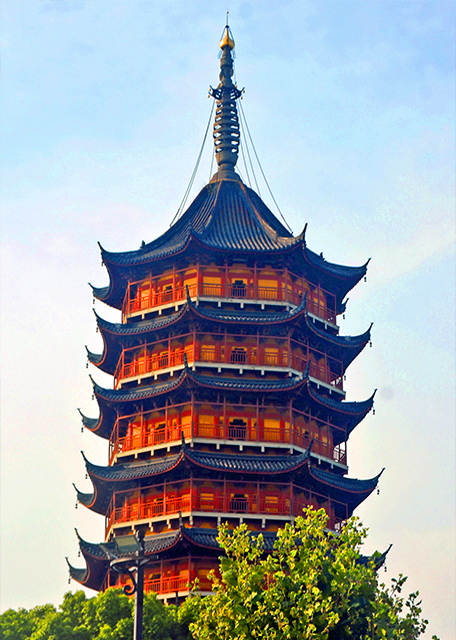
North Temple Pagoda, the Tallest Pagoda in the City as the "Number One Pagoda South of the Yangtze" Dating back 1,700 Years (北寺塔·全市最高的宝塔,被誉为“长江以南第一塔”,其悠久的历史可追溯至1700年前的汉代) 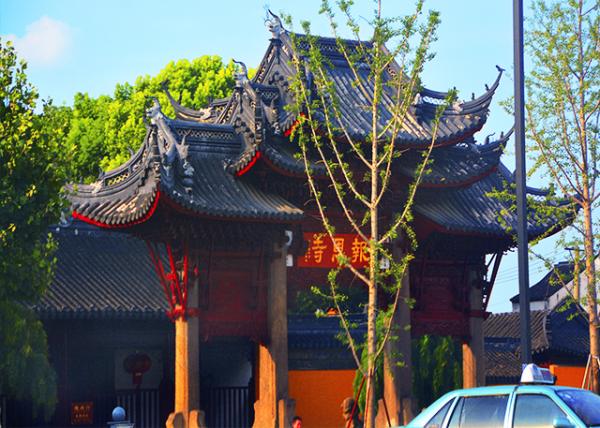 Temple of Gratitude Reflecting the Buddhist Virtue of Compassion & Remembrance Temple of Gratitude Reflecting the Buddhist Virtue of Compassion & Remembrance
(报恩寺·体现佛教慈悲和缅怀的美德)
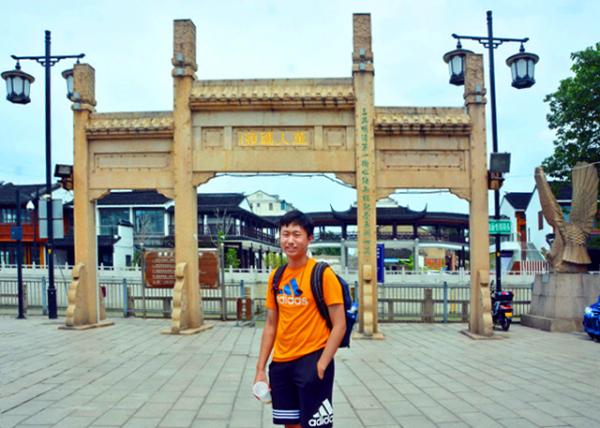 Criminal Wharf, the Historic Shantang Old Street or Qili Shantang Area Criminal Wharf, the Historic Shantang Old Street or Qili Shantang Area
(万人码头·历史悠久的七里山塘老街一带 07-24-2019) 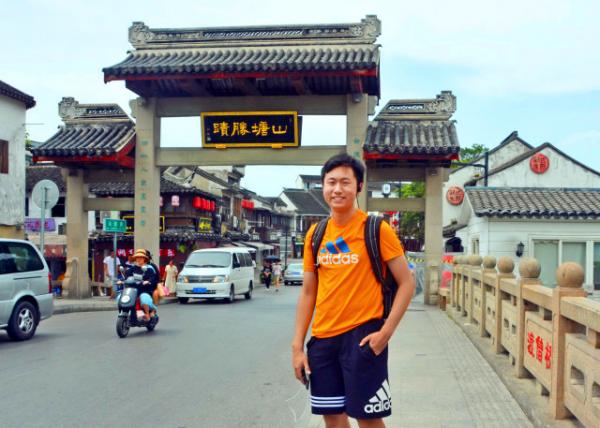 Gateway to Shantang Histori" & C" ltural Block Gateway to Shantang Histori" & C" ltural Block
("山塘胜迹" 牌坊 07-24-2019) 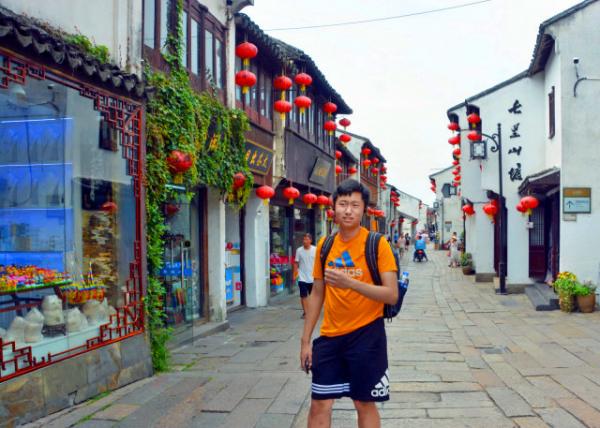 Seven-mile Shantang w/ Its Stunning Preservation of Ancient Jiangnan Water Town Scenery Seven-mile Shantang w/ Its Stunning Preservation of Ancient Jiangnan Water Town Scenery
(七里山塘·保存完好的江南古水乡风光 07-24-2019)
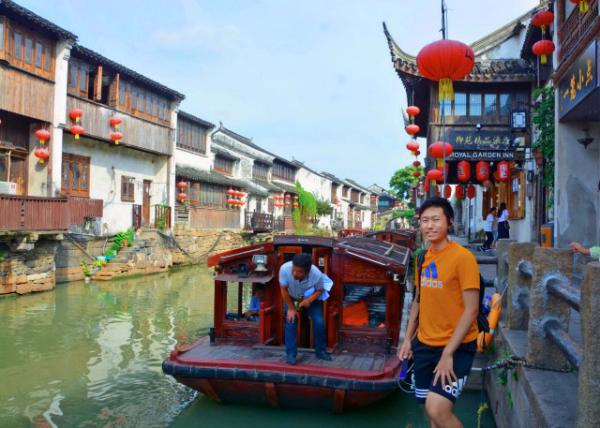 Baigong Diky, the Embankment Constructed under the Supervision of Bai Juyi, the Prefect of Suzhou Baigong Diky, the Embankment Constructed under the Supervision of Bai Juyi, the Prefect of Suzhou
(白公堤·由苏州刺史白居易主持修筑的堤坝 07-24-2019) 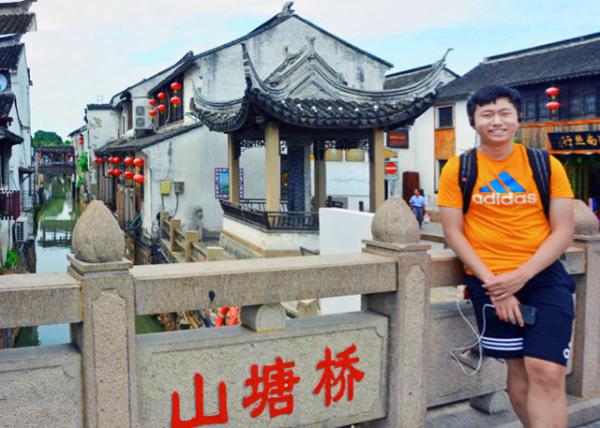 Shantang Bridge @ Historical & Cultural Block Shantang Bridge @ Historical & Cultural Block
(历史文化街区·山塘桥 07-24-2019) 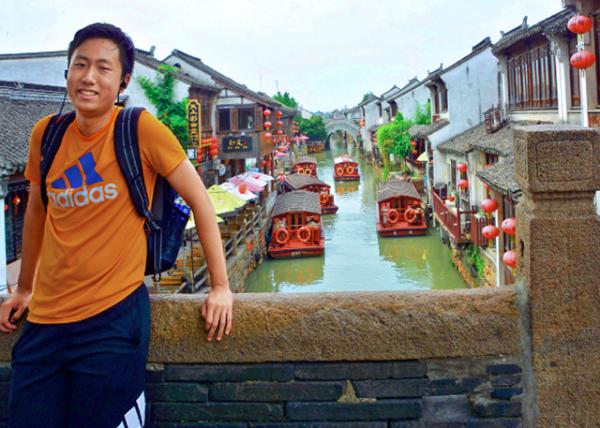 Baigong Dyke, Commemorating Bai Juyi Served in Suzhou & Oversaw the Canal Dredging Baigong Dyke, Commemorating Bai Juyi Served in Suzhou & Oversaw the Canal Dredging
(白公堤·为纪念白居易在苏州任职并主持运河疏浚工程 07-24-2019) 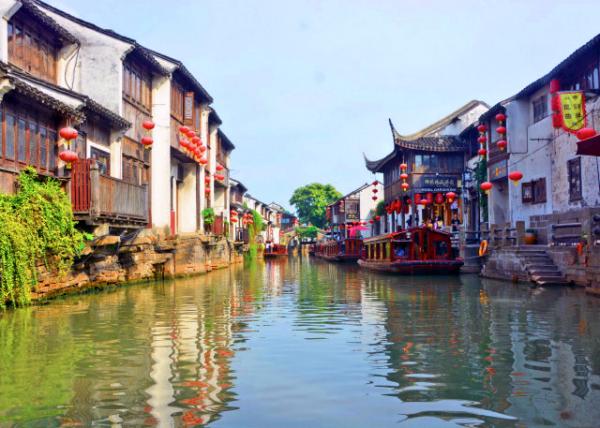 Shantang Canal, a Prime Example of Suzhou's "Water Town" Charm Shantang Canal, a Prime Example of Suzhou's "Water Town" Charm
(山塘运河·苏州“水乡”魅力的绝佳体现)
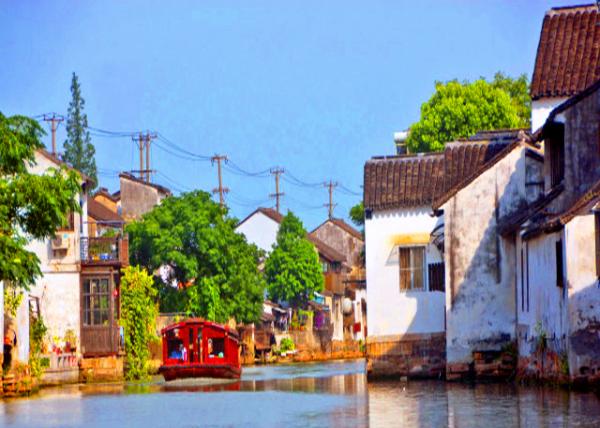 Historic Charm, Featuring Traditional Suzhou-style Houses & Picturesque Arched Bridges Historic Charm, Featuring Traditional Suzhou-style Houses & Picturesque Arched Bridges
(历史韵味·拥有传统的苏州式房屋和风景如画的拱桥) 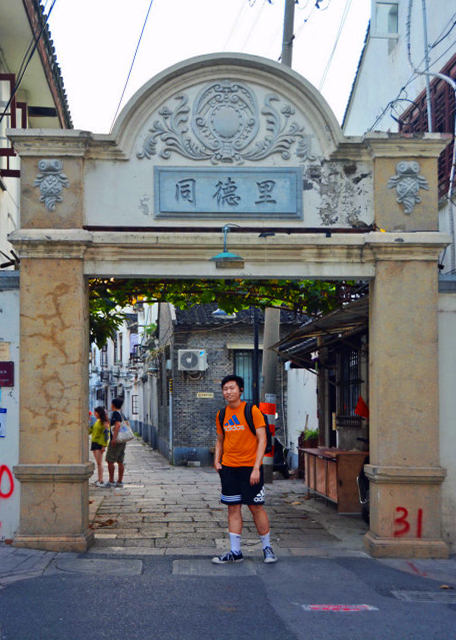
Republic Relics @ One-Mind Lane (同德里民国建筑群 07-24-2019) 
One-Mind Lane (同德里 07-24-2019)  Propaganda (政治宣传 07-24-2019) Propaganda (政治宣传 07-24-2019)
Crosslinks(相关博文):
2018: Venice—Last Day in Water City, Italy(意大利威尼斯─道别水城) 2018: Venice—Queen of the Adriatic, ITA(意大利威尼斯—亚德里亚海女王) 2017: Colmar the Little Venice, France(法国科尔马—微型威尼斯) 2017: Amsterdam—Venice of the North, NLD(荷兰阿姆斯特丹—北方的威尼斯) 2016: Stockholm—Venice of the North, SWE(瑞典斯德哥尔摩—北方的威尼斯) 2016: St. Petersburg—Venice of the North(俄罗斯圣彼得堡—北方的威尼斯) 2016: Copenhagen—Venice of the North, DNK(丹麦哥本哈根—北方的威尼斯) China(出游中国) 10th Grade(高中二年级) |
